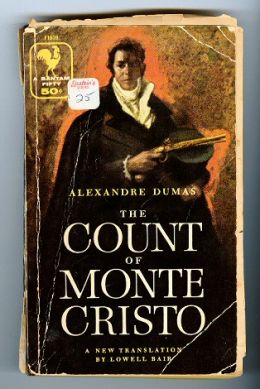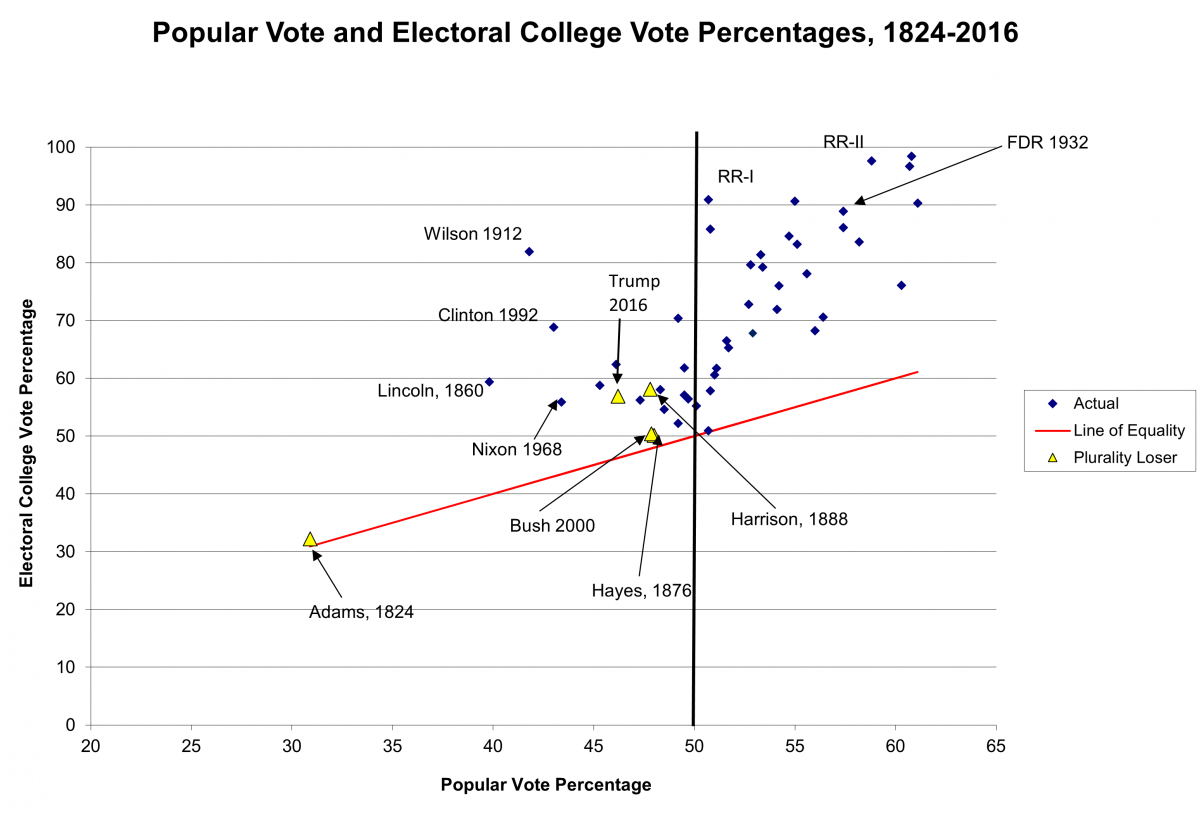A Critical Look At Alexandre Dumas' The Count Of Monte Cristo

Table of Contents
The Allure of Revenge: Exploring Edmond Dantès' Journey
The Seeds of Vengeance:
Edmond Dantès's quest for revenge forms the heart of The Count of Monte Cristo. His journey begins with a devastating betrayal, fueled by jealousy and ambition.
- Wrongful imprisonment: Falsely accused of treason, Edmond is unjustly incarcerated in the infamous Château d'If.
- Betrayal by friends: The cruel actions of Fernand Mondego, Danglars, and Villefort shatter Edmond's trust and ignite his desire for retribution.
- Stolen love: The loss of his beloved Mercedes further fuels his burning resentment.
The psychological impact of his prolonged imprisonment is profound, transforming the naive sailor into a cunning and resourceful mastermind. This transformation raises crucial questions about the morality of revenge – is it ever justifiable, and what are its ultimate consequences? The novel doesn't offer easy answers, forcing readers to grapple with the complex ethical dilemmas presented by Edmond's actions.
Masterful Manipulation and Strategic Planning:
Edmond's path to revenge is characterized by meticulous planning and masterful manipulation. Having learned valuable skills and accumulated immense wealth during his years of confinement, he emerges from prison as the enigmatic Count of Monte Cristo.
- Cunning strategies: He employs a series of carefully orchestrated schemes, using disguises, forged documents, and subtle manipulations to exact his revenge.
- Use of disguises: The Count's ability to seamlessly adopt different identities allows him to infiltrate the lives of his enemies undetected.
- Manipulation of key players: He skillfully plays on the weaknesses and ambitions of those around him, turning them against each other.
The effectiveness of Edmond's methods is undeniable, yet the question of their moral justification remains. Are his actions truly justifiable given the profound injustices he suffered? The novel leaves this question open to interpretation, enriching its complexity and enduring appeal.
Themes of Justice, Injustice, and Redemption in The Count of Monte Cristo
The Perversion of Justice:
The Count of Monte Cristo exposes the flaws and injustices within the French legal system of the time. Corruption, biased judgments, and a lack of due process allow the guilty to escape punishment while the innocent suffer.
- Corruption: Villefort’s ambition and self-preservation lead him to actively participate in the conspiracy against Edmond.
- Biased judgments: The hasty and unfair trial that condemns Edmond highlights the system's inherent biases.
- Lack of due process: Edmond is denied a fair hearing and the opportunity to defend himself against the false accusations.
These instances of injustice underscore the novel's central theme: the urgent need for a just and equitable legal system.
The Pursuit of Justice:
Edmond's pursuit of justice takes a unique form, combining legal means with his own acts of revenge. He uses his newfound wealth and intellect to expose the corruption and manipulate events to his advantage, seeking what he believes is poetic justice.
- Legal means: In some instances, Edmond uses legitimate legal channels to expose his enemies' crimes.
- Revenge as justice: Edmond's acts of revenge, while extreme, serve as a form of personal justice, compensating for the failures of the official system.
- Poetic justice: The novel often delivers a form of poetic justice, where the villains receive punishments that reflect their own actions.
The Possibility of Redemption:
The novel explores the possibility of redemption for both Edmond and his enemies. Does true redemption even occur? This is a question that resonates throughout the narrative.
- Edmond's arc: Though initially driven by revenge, Edmond demonstrates moments of compassion and forgiveness, suggesting a possible path to redemption.
- Enemies' fates: The fates of Fernand, Danglars, and Villefort are ambiguous, leaving the reader to ponder whether they have truly found redemption or merely faced the consequences of their actions.
- Forgiveness and redemption: The novel leaves the ultimate question of forgiveness and redemption unanswered, adding to its complex and thought-provoking nature.
Characters and Relationships: A Deeper Dive into the Novel's Dynamics
Edmond Dantès: A Complex Protagonist:
Edmond Dantès is a multifaceted character whose transformation is central to the story.
- Initial naiveté: At the start of the novel, Edmond is portrayed as a trusting and innocent young man.
- Transformation into the Count: His imprisonment and subsequent experiences reshape him, turning him into a master of disguise and manipulation.
- Capacity for love and vengeance: The Count maintains the capacity for love alongside his thirst for revenge, highlighting the complexities of his character.
Supporting Characters and their Roles:
The supporting characters in The Count of Monte Cristo are crucial to the narrative, each playing a significant role in Edmond's journey.
- Mercedes: Edmond’s lost love, whose actions and choices contribute to the central conflict.
- Fernand Mondego: Driven by jealousy and ambition, Fernand's betrayal sets the plot in motion.
- Danglars: A cunning and avaricious shipmate, Danglars’s betrayal stems from envy and a desire for wealth.
- Villefort: A powerful prosecutor whose ambition and fear lead him to participate in the conspiracy against Edmond.
Relationships and Betrayal:
Betrayal is a central theme in The Count of Monte Cristo, shaping the relationships and driving the plot forward.
- Examples of betrayal: The novel is filled with instances of betrayal among friends, lovers, and colleagues.
- Impact on characters' lives: The consequences of these betrayals are devastating, shaping the characters' motivations and actions throughout the novel.
The Count of Monte Cristo's Enduring Legacy and Cultural Impact
The Count of Monte Cristo remains a remarkably popular novel, spawning numerous film and television adaptations, theatrical productions, and countless references in popular culture. Its enduring themes of revenge, justice, and redemption continue to resonate with audiences today. The novel's exploration of social injustice and the complexities of human nature ensures its place within the canon of classic literature, guaranteeing its continued relevance for generations to come.
Conclusion: Reflecting on the Timeless Appeal of The Count of Monte Cristo
This analysis of The Count of Monte Cristo has explored the novel's intricate plot, compelling characters, and enduring themes. The story's exploration of revenge, justice, injustice, and the complexities of human relationships continues to captivate and challenge readers. The novel's lasting legacy lies in its ability to expose the flaws within systems of power, while simultaneously exploring the human capacity for both immense cruelty and surprising compassion. We urge you to engage with The Count of Monte Cristo – whether through reading the classic novel, enjoying a film adaptation, or exploring further critical analysis of this timeless masterpiece. Discover for yourself the richness and depth of this compelling story and the reasons for its enduring power.

Featured Posts
-
 Blake Lively And Anna Kendrick A Timeline Of Their Reported Feud
May 04, 2025
Blake Lively And Anna Kendrick A Timeline Of Their Reported Feud
May 04, 2025 -
 Re Examining Dumas The Count Of Monte Cristo A Modern Perspective
May 04, 2025
Re Examining Dumas The Count Of Monte Cristo A Modern Perspective
May 04, 2025 -
 South Bengal Temperature Surge 38 C Recorded On Holi
May 04, 2025
South Bengal Temperature Surge 38 C Recorded On Holi
May 04, 2025 -
 Farage Outpolls Starmer As Preferred Pm In Majority Of Uk Constituencies
May 04, 2025
Farage Outpolls Starmer As Preferred Pm In Majority Of Uk Constituencies
May 04, 2025 -
 Disqualification Of Popular Vote Winners In Student Government Election Gonzalez And Salzer Assume Office
May 04, 2025
Disqualification Of Popular Vote Winners In Student Government Election Gonzalez And Salzer Assume Office
May 04, 2025
